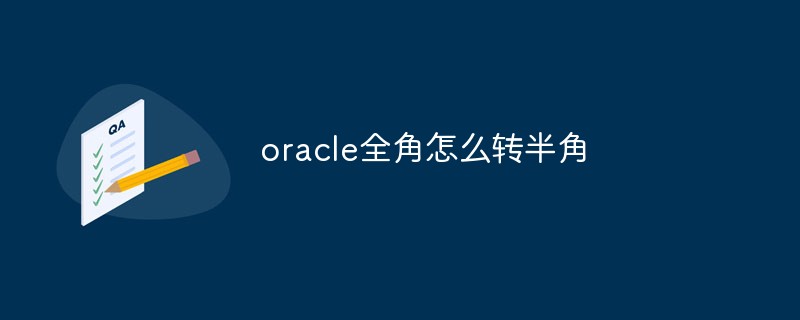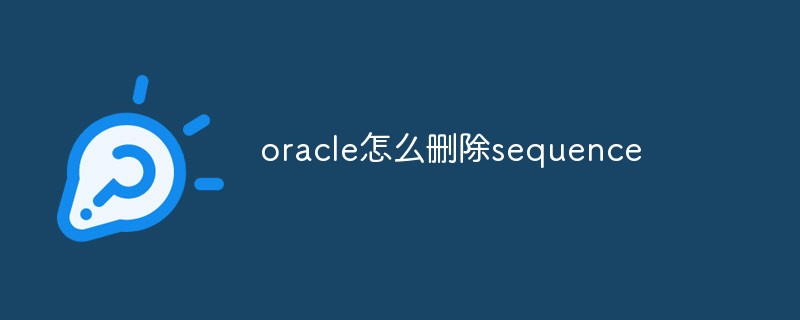There are 9 types of tables: 1. Index-organized table, a table stored according to an index structure; 2. Index clustered table, a table that stores multiple tables together; 3. Hash clustered table , hash the data to the database block by hashing the clustering key; 4. Ordered hashing clustering table, the rows are hashed according to a certain key value, and a series of records related to the key are stored in the order of insertion; 5. Nested tables and so on.

The operating environment of this tutorial: Windows 10 system, Oracle 11g version, Dell G3 computer.
What are the types of tables in Oracle
1) Heap organized table (heaporganized table)
This is a standard database table. Data is managed in a heap. When adding data, the first free space found in the segment that can accommodate the data is used. After deleting data from the table, allow future INSERTs and UPDATEs to reuse this space. A heap is a set of space that is used in a random manner.
2) Index organized table
The table is stored according to the index structure. This forces some physical ordering of the rows themselves. In a heap-organized table, data can be placed anywhere; in IOT, data must be stored in an orderly manner according to the primary key.
3) Index clustered table
Cluster refers to a group of one or more tables, which are physically stored All rows with the same clustering key value are physically stored adjacent to each other on the same database block.
First, multiple tables can be physically stored together. Generally speaking, you can think of one database block as storing data for one table, but for clustered tables, data from multiple tables may be stored on the same block.
Secondly, all data containing the same clustering key value (such as DEPTNO=10) will be physically stored together. The data is "clustered" together by the clustering key value. Clustering keys are created using B* tree indexes.
4) Hash clustered table
is similar to an index clustered table, but does not use B* tree index clustering keys to locate data. Instead, the data is hashed onto database blocks by hashing the clustering key. In hash clustering, the data is the index (metaphorically speaking). Hash clustered tables are suitable if data needs to be read frequently through key equality comparisons.
5) Sorted hash clustered table
Newly added in Oracle10g, it has the characteristics of a hash clustered table and is also There are some characteristics of IoT.
Rows are hashed by a key value (such as CUSTOMER_ID), and a series of records related to that key are stored in insertion order. (Thus these records may be timestamp based records).
For example, in an order entry system, orders are obtained and processed on a first-in, first-out (FIFO) basis. In such a system, ordered hash clustering is the appropriate data structure.
6) Nested table
Nested table is part of the Oracle object relational extension. They are actually child tables in a parent/child relationship generated and maintained by the system.
7) Temporary table (temporarytable)
The temporary table allocates temporary sections from the current user's temporary table space as needed. Each session sees only the extents allocated by this session; it never sees any data created in any other session.
8) Object table (objecttable)
The object table is created based on a certain object type. They have special properties that non-object tables do not have. For example, the system generates a REF (object identifier) for each row of the object table.
Object tables are actually special cases of heap-organized tables, index-organized tables, and temporary tables, and can also contain nested tables as part of their structure.
9) External table (externaltable)
These tables are not stored in the database itself, but placed outside the database, that is, placed in the ordinary operating system in the file.
Using an external table, you can query a file outside the database, as if the file was also an ordinary table in the database. External tables are most useful for loading data into the database (external tables are very powerful data loading tools).
Oracle10g goes a step further and also introduces an external table unloading feature, which provides an easy way to move data between Oracle databases without using database links.
Recommended tutorial: "Oracle Video Tutorial"
The above is the detailed content of What are the types of tables in Oracle. For more information, please follow other related articles on the PHP Chinese website!
 什么是oracle asmApr 18, 2022 pm 04:16 PM
什么是oracle asmApr 18, 2022 pm 04:16 PMoracle asm指的是“自动存储管理”,是一种卷管理器,可自动管理磁盘组并提供有效的数据冗余功能;它是做为单独的Oracle实例实施和部署。asm的优势:1、配置简单、可最大化推动数据库合并的存储资源利用;2、支持BIGFILE文件等。
 oracle怎么查询所有索引May 13, 2022 pm 05:23 PM
oracle怎么查询所有索引May 13, 2022 pm 05:23 PM方法:1、利用“select*from user_indexes where table_name=表名”语句查询表中索引;2、利用“select*from all_indexes where table_name=表名”语句查询所有索引。
 Oracle怎么查询端口号May 13, 2022 am 10:10 AM
Oracle怎么查询端口号May 13, 2022 am 10:10 AM在Oracle中,可利用lsnrctl命令查询端口号,该命令是Oracle的监听命令;在启动、关闭或重启oracle监听器之前可使用该命令检查oracle监听器的状态,语法为“lsnrctl status”,结果PORT后的内容就是端口号。
 oracle全角怎么转半角May 13, 2022 pm 03:21 PM
oracle全角怎么转半角May 13, 2022 pm 03:21 PM在oracle中,可以利用“TO_SINGLE_BYTE(String)”将全角转换为半角;“TO_SINGLE_BYTE”函数可以将参数中所有多字节字符都替换为等价的单字节字符,只有当数据库字符集同时包含多字节和单字节字符的时候有效。
 oracle怎么删除sequenceMay 13, 2022 pm 03:35 PM
oracle怎么删除sequenceMay 13, 2022 pm 03:35 PM在oracle中,可以利用“drop sequence sequence名”来删除sequence;sequence是自动增加数字序列的意思,也就是序列号,序列号自动增加不能重置,因此需要利用drop sequence语句来删除序列。
 oracle怎么查询数据类型May 13, 2022 pm 04:19 PM
oracle怎么查询数据类型May 13, 2022 pm 04:19 PM在oracle中,可以利用“select ... From all_tab_columns where table_name=upper('表名') AND owner=upper('数据库登录用户名');”语句查询数据库表的数据类型。
 oracle查询怎么不区分大小写May 10, 2022 pm 05:45 PM
oracle查询怎么不区分大小写May 10, 2022 pm 05:45 PM方法:1、利用“LOWER(字段值)”将字段转为小写,或者利用“UPPER(字段值)”将字段转为大写;2、利用“REGEXP_LIKE(字符串,正则表达式,'i')”,当参数设置为“i”时,说明进行匹配不区分大小写。
 Oracle怎么修改sessionMay 13, 2022 pm 05:06 PM
Oracle怎么修改sessionMay 13, 2022 pm 05:06 PM方法:1、利用“alter system set sessions=修改后的数值 scope=spfile”语句修改session参数;2、修改参数之后利用“shutdown immediate – startup”语句重启服务器即可生效。


Hot AI Tools

Undresser.AI Undress
AI-powered app for creating realistic nude photos

AI Clothes Remover
Online AI tool for removing clothes from photos.

Undress AI Tool
Undress images for free

Clothoff.io
AI clothes remover

AI Hentai Generator
Generate AI Hentai for free.

Hot Article

Hot Tools

PhpStorm Mac version
The latest (2018.2.1) professional PHP integrated development tool

SublimeText3 Mac version
God-level code editing software (SublimeText3)

mPDF
mPDF is a PHP library that can generate PDF files from UTF-8 encoded HTML. The original author, Ian Back, wrote mPDF to output PDF files "on the fly" from his website and handle different languages. It is slower than original scripts like HTML2FPDF and produces larger files when using Unicode fonts, but supports CSS styles etc. and has a lot of enhancements. Supports almost all languages, including RTL (Arabic and Hebrew) and CJK (Chinese, Japanese and Korean). Supports nested block-level elements (such as P, DIV),

Notepad++7.3.1
Easy-to-use and free code editor

Safe Exam Browser
Safe Exam Browser is a secure browser environment for taking online exams securely. This software turns any computer into a secure workstation. It controls access to any utility and prevents students from using unauthorized resources.







